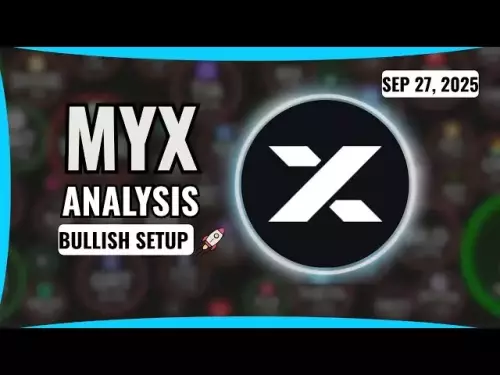-
 bitcoin
bitcoin $109523.663807 USD
-0.13% -
 ethereum
ethereum $4019.526508 USD
2.06% -
 tether
tether $1.000482 USD
0.00% -
 xrp
xrp $2.776815 USD
0.18% -
 bnb
bnb $958.942396 USD
0.12% -
 solana
solana $204.294698 USD
3.84% -
 usd-coin
usd-coin $0.999693 USD
0.00% -
 dogecoin
dogecoin $0.232115 USD
2.09% -
 tron
tron $0.338028 USD
0.84% -
 cardano
cardano $0.790920 USD
1.50% -
 hyperliquid
hyperliquid $44.871443 USD
5.60% -
 ethena-usde
ethena-usde $1.000322 USD
0.04% -
 chainlink
chainlink $21.034165 USD
2.60% -
 avalanche
avalanche $28.794831 USD
-0.54% -
 stellar
stellar $0.360466 USD
1.24%
How to use Fibonacci retracement for BTC?
Fibonacci retracement helps BTC traders identify key support/resistance levels like 38.2%, 50%, and 61.8% to anticipate price reversals, especially when combined with volume, RSI, or candlestick patterns for more reliable signals.
Jul 07, 2025 at 03:21 am

Understanding Fibonacci Retracement in Cryptocurrency Trading
Fibonacci retracement is a popular technical analysis tool used by traders to identify potential support and resistance levels. In the context of BTC trading, this method helps traders anticipate price reversals or corrections based on historical price swings. The foundation of Fibonacci retracement lies in the Fibonacci sequence, a mathematical series where each number is the sum of the two preceding ones. The key ratios derived from this sequence—23.6%, 38.2%, 50%, 61.8%, and 78.6%—are used to determine retracement levels.
When applied to BTC/USD charts, these levels act as potential zones where the price may pause or reverse before continuing its original trend. Traders often combine Fibonacci retracement with other indicators like moving averages or RSI to confirm signals.
Selecting the Right Timeframe for BTC Analysis
Before applying Fibonacci retracement to Bitcoin, it's crucial to choose the appropriate timeframe. Daily or 4-hour charts are commonly preferred by swing traders, while intraday traders may use 1-hour or 15-minute intervals. The goal is to capture significant price swings that reflect strong momentum.
To draw accurate Fibonacci levels:
- Identify a recent significant price swing, either from a major low to high (for uptrends) or high to low (for downtrends).
- Ensure the swing isn't too small; ideally, it should span several candlesticks and represent clear directional movement.
- Use candlestick patterns or volume spikes to validate the strength of the move.
Choosing the correct timeframe ensures that the retracement levels are more reliable and relevant to the current market structure.
Drawing Fibonacci Levels on BTC Price Charts
Once you've selected the right timeframe and identified a strong price swing, the next step is drawing the Fibonacci retracement levels. Here’s how:
- Open your preferred trading platform (e.g., TradingView or Binance).
- Select the Fibonacci retracement tool from the drawing tools menu.
- Click on the starting point of the price swing (e.g., the lowest candlestick in an uptrend).
- Drag the tool to the endpoint of the swing (e.g., the highest candlestick).
- Release the mouse button to finalize the retracement levels.
The chart will now display horizontal lines at the 23.6%, 38.2%, 50%, 61.8%, and 78.6% levels. These levels serve as possible areas where BTC could retrace before resuming its trend.
It’s important to note that Fibonacci levels aren’t exact predictions but rather zones of interest. Traders should always wait for confluence with other tools before making decisions.
Interpreting Fibonacci Levels During BTC Uptrends
In an uptrend, traders expect BTC to retrace downward before continuing upward. When the price reaches one of the Fibonacci levels during a pullback, it may find support and bounce back. The most watched levels are 38.2%, 50%, and 61.8%.
Here’s what typically happens:
- If BTC finds strong buying pressure at 38.2%, it suggests the trend remains healthy.
- A drop to 50% may indicate moderate weakness but not necessarily a reversal.
- A break below 61.8% could signal deeper correction or even trend change.
Traders often look for candlestick reversal patterns such as hammers or engulfing candles near these levels. Volume analysis also plays a role—if volume drops significantly during a retracement, it might indicate lack of selling pressure and a likely continuation.
Analyzing Fibonacci Retracements in BTC Downtrends
During a downtrend, Fibonacci retracement helps identify potential resistance levels where the price might stall before continuing lower. In this scenario, the retracement is drawn from the swing high to the swing low.
Key observations include:
- If BTC stalls near 23.6% or 38.2%, it may suggest sellers are regaining control.
- A rebound from 50% or higher can indicate weakening bearish momentum.
- A failure to hold below 61.8% may hint at a possible trend reversal.
In bear markets, traders often look for bearish candlestick patterns like shooting stars or evening stars near these levels. Combining this with volume analysis can help distinguish between temporary bounces and actual reversals.
Combining Fibonacci with Other Technical Tools
Using Fibonacci retracement alone can be misleading. Successful BTC traders integrate it with other technical tools to increase accuracy. Some common combinations include:
- Moving Averages: Check if price respects levels near the 50-period or 200-period moving average.
- RSI (Relative Strength Index): Look for overbought (>70) or oversold (
- Volume Profile: Observe if there’s increased volume at certain retracement levels, indicating stronger support/resistance.
- Trendlines: Confirm whether Fibonacci levels align with existing trendline structures.
By combining multiple tools, traders can filter out false signals and make more informed decisions about entry and exit points.
Frequently Asked Questions
Q: Can Fibonacci retracement be used on all cryptocurrencies?Yes, Fibonacci retracement is applicable to all tradable assets including altcoins. However, its effectiveness increases with higher liquidity and volume, making BTC and ETH ideal candidates.
Q: What timeframes work best with Fibonacci retracement for BTC?While it works across all timeframes, higher timeframes like daily or 4-hour charts tend to offer more reliable retracement levels due to reduced noise and increased trader participation.
Q: Should I always trust Fibonacci levels for trade entries?No, Fibonacci levels should not be used in isolation. Always seek confirmation from price action, candlestick patterns, or volume changes before entering trades.
Q: How do I know which swing to use for drawing Fibonacci retracement?Focus on clear and strong price swings with visible momentum. Avoid using minor fluctuations or choppy price movements as they can lead to misleading levels.
Disclaimer:info@kdj.com
The information provided is not trading advice. kdj.com does not assume any responsibility for any investments made based on the information provided in this article. Cryptocurrencies are highly volatile and it is highly recommended that you invest with caution after thorough research!
If you believe that the content used on this website infringes your copyright, please contact us immediately (info@kdj.com) and we will delete it promptly.
- Crypto Presales: Is $BFX the Next Big Thing?
- 2025-09-28 00:25:12
- Kraken's IPO Ambitions: Navigating Valuation in a Recovering Crypto Market
- 2025-09-28 00:25:12
- Bitcoin's Bumpy Ride: Navigating Risks and Potential Downturns
- 2025-09-28 00:30:01
- Sleep Token's Macabre Metal Mastery: A Deep Dive
- 2025-09-28 00:30:01
- AI-Driven Metaverse: Building Blockchain Trust in the Digital Frontier
- 2025-09-28 00:30:01
- Lyno AI: The Altcoin Presale Primed for a 1400% Surge?
- 2025-09-28 00:30:12
Related knowledge

Why is Bitcoin considered a revolutionary technology?
Aug 12,2025 at 08:29pm
Decentralization and the Elimination of Central AuthoritiesThe core innovation behind Bitcoin lies in its decentralized architecture, which fundamenta...

Why is Bitcoin considered a revolutionary technology?
Aug 10,2025 at 07:42pm
Decentralized Architecture and Trustless TransactionsBitcoin is considered revolutionary because it introduced a decentralized architecture that opera...

What are the key features of Bitcoin?
Aug 10,2025 at 02:50am
Decentralization and Peer-to-Peer NetworkOne of the most defining characteristics of Bitcoin is its decentralized nature. Unlike traditional financial...

Can the Bitcoin protocol be changed?
Aug 07,2025 at 01:16pm
Understanding the Bitcoin ProtocolThe Bitcoin protocol is the foundational set of rules that govern how the Bitcoin network operates. It defines every...

Can the Bitcoin protocol be changed?
Aug 11,2025 at 01:01am
Understanding the Bitcoin Protocol StructureThe Bitcoin protocol is the foundational set of rules that govern how the Bitcoin network operates. These ...

What happens to Bitcoin transactions once they are confirmed?
Aug 09,2025 at 05:22am
Understanding Bitcoin Transaction ConfirmationWhen a Bitcoin transaction is initiated, it is broadcast to the network and placed in a pool of unconfir...

Why is Bitcoin considered a revolutionary technology?
Aug 12,2025 at 08:29pm
Decentralization and the Elimination of Central AuthoritiesThe core innovation behind Bitcoin lies in its decentralized architecture, which fundamenta...

Why is Bitcoin considered a revolutionary technology?
Aug 10,2025 at 07:42pm
Decentralized Architecture and Trustless TransactionsBitcoin is considered revolutionary because it introduced a decentralized architecture that opera...

What are the key features of Bitcoin?
Aug 10,2025 at 02:50am
Decentralization and Peer-to-Peer NetworkOne of the most defining characteristics of Bitcoin is its decentralized nature. Unlike traditional financial...

Can the Bitcoin protocol be changed?
Aug 07,2025 at 01:16pm
Understanding the Bitcoin ProtocolThe Bitcoin protocol is the foundational set of rules that govern how the Bitcoin network operates. It defines every...

Can the Bitcoin protocol be changed?
Aug 11,2025 at 01:01am
Understanding the Bitcoin Protocol StructureThe Bitcoin protocol is the foundational set of rules that govern how the Bitcoin network operates. These ...

What happens to Bitcoin transactions once they are confirmed?
Aug 09,2025 at 05:22am
Understanding Bitcoin Transaction ConfirmationWhen a Bitcoin transaction is initiated, it is broadcast to the network and placed in a pool of unconfir...
See all articles









































































